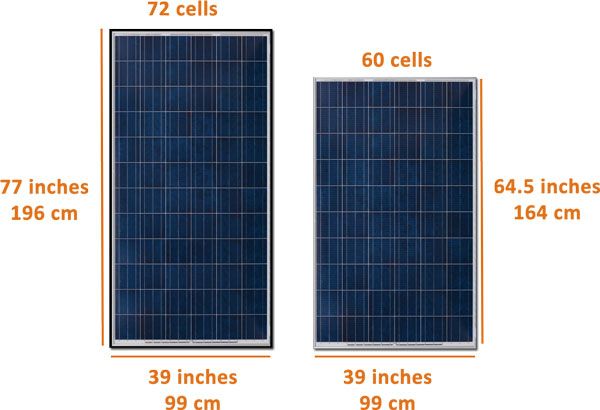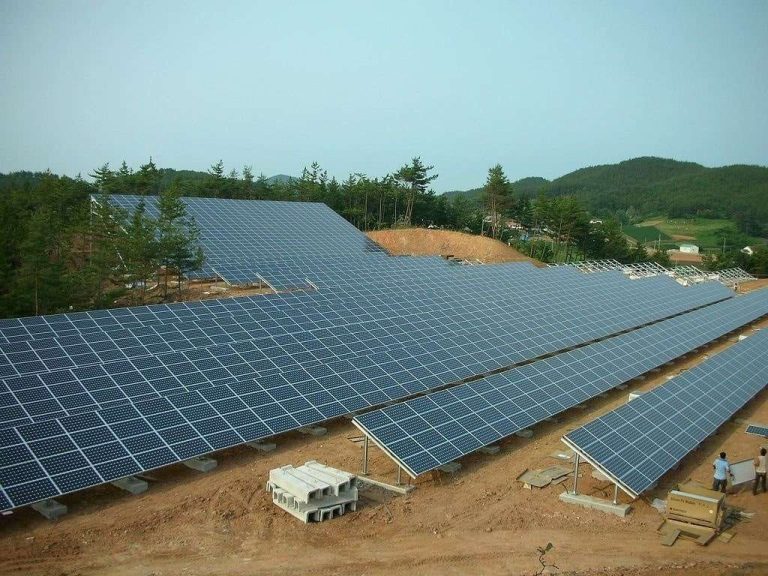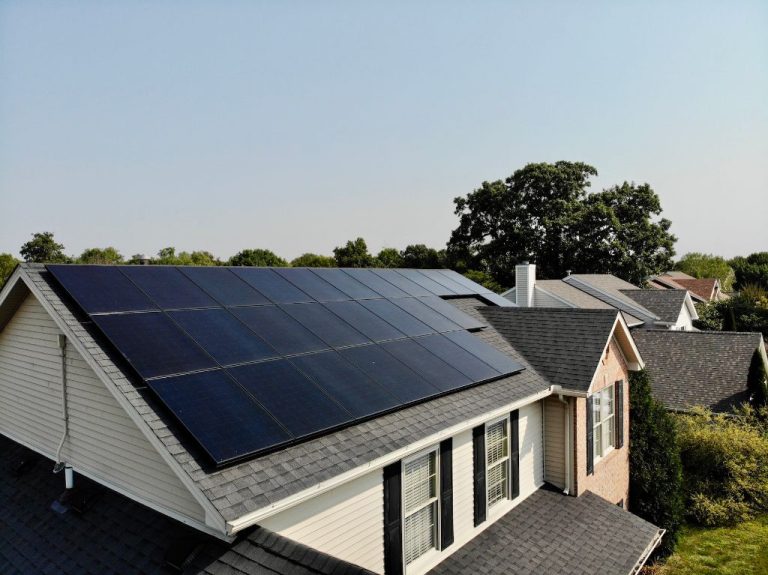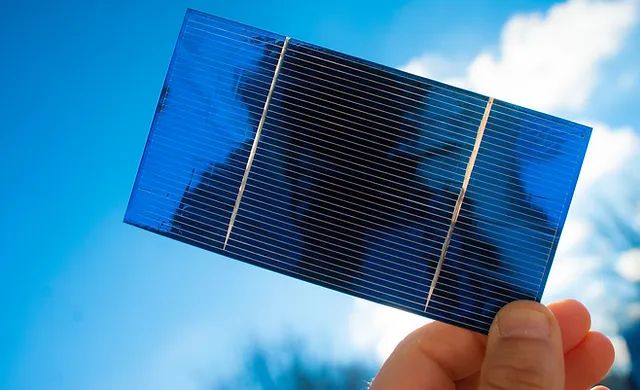How Much Does The Average Solar Panel Make?
Solar panels, also known as photovoltaic panels, are devices that convert sunlight into electricity. They contain solar cells made up of photovoltaic materials, most commonly silicon, that absorb photons from sunlight and release electrons. This generates an electric current that can be used to power homes and businesses or fed back into the grid.
In recent years, solar panels have been rapidly growing in popularity as a renewable energy source. With the cost of solar installation steadily declining, more and more homeowners and businesses are choosing to install solar panel systems to reduce their electricity bills and environmental impact. Understanding how much energy and financial benefit solar panels can provide is an important factor when deciding whether to install them.
This article will examine how much electricity and money the average residential solar panel system generates, providing key information for homeowners considering going solar.
Calculating Solar Panel Output
The output of a solar panel is measured in watts. This indicates how much power the panel can produce at optimal conditions. There are several factors that determine the potential output:
- Panel size – Larger panels have higher capacity to generate more electricity.
- Efficiency rating – This measures how much of the sunlight hitting the panel gets converted into electricity. Higher efficiency panels produce more power.
- Orientation – Panels facing true south (in the northern hemisphere) at an angle equal to your latitude receive optimal sunlight.
- Shading – Solar panels perform best in full sun. Even partial shading can greatly reduce output.
- Local climate conditions – More sunlight and warmer temperatures increase production.
- Age of system – Output declines slightly over time as panels degrade.
By understanding how these factors influence performance, you can better estimate how much electricity a solar panel system will generate.
Typical Output of Residential Solar Panels

The average output of a residential solar panel is around 250-350 watts, though this can vary based on the size, efficiency and type of panel. Most home solar systems use either monocrystalline or polycrystalline silicon panels which have average outputs of around 300 watts.
This is lower than the output of commercial solar panels which often range from 320-400 watts for a standard 60 cell panel. Commercial solar farms will use larger, more high efficiency solar panels to maximize energy production.
Different types of solar panels for homes include:
- Monocrystalline – Most efficient but more expensive. Average output around 300 watts.
- Polycrystalline – Slightly lower efficiency but cheaper. Average output around 270 watts.
- Thin-film – Made from amorphous silicon and have an average output around 200 watts. Less efficient but can be flexible.
So in summary, a typical residential solar panel will produce 250-350 watts under peak conditions. This is lower than the commercial solar panels used in large-scale solar farms. Output varies based on panel material with monocrystalline being the most efficient for home systems.
Average System Size for Homes
The average size of residential solar panel systems in the U.S. is around 7-8 kilowatts (kW), generating about 10,000 kilowatt-hours (kWh) per year. However, system sizes vary significantly by region.
In sunnier states like California and Arizona, the average system size is around 9-10 kW. This allows homeowners in those areas to generate 12,000-14,000 kWh per year. Larger systems are worthwhile because of the abundant sunlight available.
In the Northeast and Pacific Northwest, average system sizes are smaller at 4-6 kW. Due to less sunshine, these systems generate 6,000-8,000 kWh annually. Homeowners have less incentive to install larger solar arrays in regions with fewer daylight hours.
Regardless of location, larger solar panel systems will produce more electricity. Adding more panels allows households to offset a greater portion of their electrical use from the utility grid.
Estimating Total Power Production
To estimate the total amount of electricity generated annually by a home solar panel system, we need to consider the typical output of the panels along with the average system size. Most residential solar panels today have a power rating ranging from 300 to 400 watts, with a solar panel efficiency of 15% to 22%. Given the average sun hours available in different regions of the U.S., a standard 300 watt solar panel in the Southwest could produce around 1,500 kWh per year, while that same panel in the Northeast may produce closer to 1,000 kWh annually.
For a typical suburban home that installs a 6 kW system size (about 18 panels), the annual kWh production would be in the range of 9,000 – 18,000 kWh depending on location. Homes with larger roof spaces that can accommodate 10 kW or more in solar panels can generate 15,000 – 30,000+ kWh per year. Factors like roof orientation and shading from trees can also impact energy production by 25% or more, so a south-facing roof with full sun exposure will maximize solar panel output.
While solar production capacity depends heavily on location and system specifics, most homes in the U.S. can offset 50-80% of their yearly electric needs with a properly sized solar array. Carefully evaluating the home’s energy consumption and designing the system for optimal solar production are key to maximizing the economic and environmental benefits.
Value of Electricity Generated
To determine the value of electricity generated by solar panels, you’ll need to know your local electricity rate. This is usually charged per kilowatt-hour (kWh). The national average is around $0.13/kWh, but this can vary significantly by state and utility company. Some parts of California see rates around $0.30/kWh or higher, while many states in the middle of the country are closer to $0.10/kWh.
Many utilities also use time-of-use pricing, charging more for electricity used during peak hours and less during off-peak times like nights and weekends. For example, peak rates may be $0.30/kWh while off-peak is $0.15. With south-facing solar panels, your system will produce more energy during those expensive peak hours.
To calculate the value of your solar generation, take the estimated annual production in kWh and multiply it by your electric rate. At the national average of $0.13/kWh, a 5 kW system producing 6,500 kWh/year would provide about $845 worth of electricity (6,500 kWh x $0.13 = $845). With higher local electric rates or time-of-use pricing, the savings add up even more.
Return on Investment
The return on investment (ROI) period for a solar panel system can vary greatly depending on the upfront cost, available tax credits and incentives, utility rates in your area, system production, and financing options. The national average payback period is around 6-8 years for a residential solar panel system.
The cost of solar panels has dropped dramatically over the last decade, making ROI periods much shorter than in previous years. However, you can expect to make a significant upfront investment of anywhere from $10,000 to $25,000 for a typical residential solar system. This cost is mitigated through the 26% federal tax credit and additional state/local incentives in places like California which can cover 50-60% of the system cost.
By generating your own power, you’ll also save money each month on your utility bills. The value of the electricity produced will depend on the retail rate you currently pay per kWh. This varies significantly, from over $0.30/kWh in states like California and New York, to under $0.10/kWh in some southern states. Utility rates are also increasing across most of the U.S. at 3-5% per year, further adding value.
Taking all factors into account, a solar system in a state with high electricity costs and strong incentives like California can achieve ROI in 3-5 years. Meanwhile, a system in a state with fewer incentives and lower utility rates may take 10+ years to break even. Knowing your local conditions is key to understanding the investment potential of residential solar panels.
Ongoing Maintenance
While solar panels themselves require very little maintenance, keeping them performing at optimal efficiency does require some minimal upkeep. Here are some of the maintenance tasks that solar panel owners should be aware of:
Cleaning – Solar panels should be cleaned a few times per year, more frequently if in a dusty climate. Use a soft brush and mild soap and water to remove dust, dirt, bird droppings, etc. This allows maximum sunlight to hit the panels.
Inverter maintenance – Most solar systems have an inverter that converts the DC power from the panels to usable AC power. The inverter needs to be kept clean, cool, and dry. Check any error codes or warning lights. Inverters may need to be replaced after 10-15 years.
Roof inspections – Since solar panels are mounted on rooftops, it’s important to periodically inspect the roof for any damage or leaks that could affect the panels or mounting system. Look for missing, cracked, or slipped tiles, accumulated debris, etc.
Wiring inspections – Solar power wires and connections should be inspected to make sure there are no cracks, damage from weather/UV rays, chewed wire coverings from pests, etc. Loose connections can cause drops in power production.
Tree trimming – Trees that have grown taller can end up shading the solar array, reducing energy production. They may need periodic pruning to allow optimal sunlight to reach the panels.
While maintenance is minimal, following these best practices allows a solar system to function at its designed capacity over its full lifetime. Proper care protects the investment in clean energy.
Financial Benefits of Solar Panels
In addition to generating electricity, installing solar panels can provide homeowners with significant financial incentives and savings. There are federal, state, and local programs that offer tax credits, rebates, and other benefits for going solar.
At the federal level, homeowners can claim a 26% tax credit for installing a residential solar energy system. This credit will cover 26% of the total cost of purchasing and installing the system. Many states also offer additional tax credits and rebates that can further reduce the net cost of a solar installation. For example, New York offers a 25% tax credit while California provides rebates up to $3,000 for residential systems.
Some utilities and municipalities also provide solar incentives in the form of renewable energy credits (RECs) and/or net metering programs. With net metering, any excess solar electricity generated can be fed back into the grid resulting in credits on your energy bill. The value of these credits varies by location but can save homeowners money, especially in months with high solar production.
While incentives vary over time, taking advantage of all available federal, state, and local programs can offset 30-60% of the total upfront cost of installing residential solar panels in many regions. This can greatly shorten the payback period on a solar system to just 5-10 years in some cases.
Conclusion
In summary, the average residential solar panel system generates around 8,000-12,000 kWh per year. For a typical 5 kW system size with 20 panels, this works out to around 400-600 kWh per panel annually. At an average electricity rate of $0.12-0.17 per kWh, the value of this generated electricity is $960-2,040 per year per system. Over the 25+ year lifespan of a solar panel system, this results in over $30,000 in energy savings and financial return on a $15,000-$25,000 initial investment.
The exact energy output and savings ultimately depend on system size, panel efficiency, sunlight availability, electricity rates, and financing options. With solar panel efficiency and cost-effectiveness improving, residential solar delivers growing environmental and economic benefits. By generating clean renewable electricity at home, solar panels help fight climate change while reducing household electric bills for decades.






